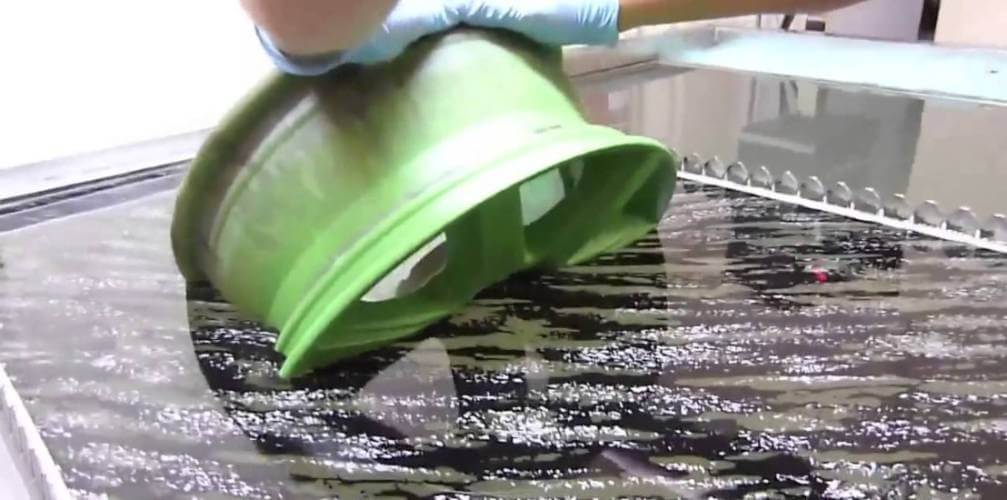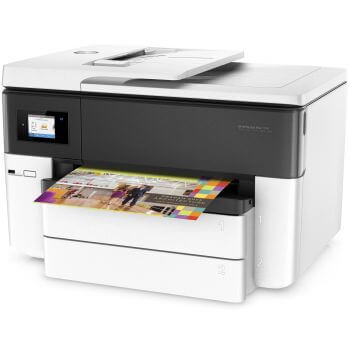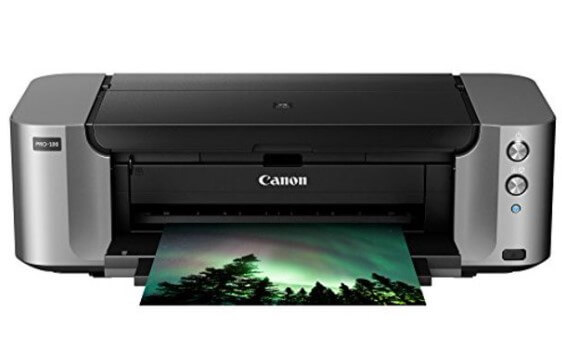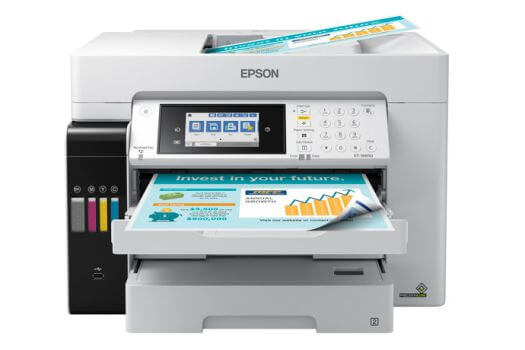
Best Printers for Hydrographic Film
The use of hydrographic film is an intriguing technology that has been around for several decades, but is only now becoming mainstream. The technology can be used for numerous applications, such as graphic arts, medical, and even military applications.
Hydrographic printing is an amazing way to add custom designs to products. It’s like a watercolor painting in three dimensions. You can print on most objects and materials including plastic, metal, glass, wood, and even fabric. This process allows artists to create beautiful designs that can be used as monograms, logos, carvings, and just about anything you’re creative enough to imagine!
Beginning a hydrographics project for the first time can be quite confusing. A lot of people are not aware of what equipment is required for hydrographic printing. It is not easy to get the best hydrographic printer. There are a lot of printers that you can choose from but you have to be very careful in order to get the best one. If you do not get the best one then it will not work well and you will never get the right kind of print out.
- Best Printers for Hydrographic Film
- 1. Epson EcoTank ET-2720 Printer
- 2. HP OfficeJet Pro 7740 Printer for Hydrographic Film
- 3. Epson WorkForce WF-7720 Inkjet Printer
- 4. Canon Pixma Pro-100 Inkjet Printer
- 5. Epson EcoTank Pro ET-16650 Printer
- How Is Hydrographic Film Made?
- Factors to Consider Before Buying Printer for Hydrographic Film
- Frequently Asked Questions
- 1. Can You Use A Regular Printer For Hydrographic Film?
- 2. Can you print your own hydrographic film?
- 3. How do I print my own hydro dip film?
- 4. What equipment is needed for hydro dipping?
- 5. Is Hydro dipping permanent?
- 6. How to use Blank hydrographic film?
- 7. What is a Hydro dipping activator?
- 8. How long does it take for a hydro dip project to dry?
- 9. How do I remove scratches from my hydro dipped items?
- 10. What Type Of Film Is Used In Hydrographic Printing?
- 11. What Is The Primary Difference Between Pigment And Dye Ink?
- Resources:
1. Epson EcoTank ET-2720 Printer

The Epson EcoTank ET-2720 delivers the print quality, reliability and performance you need to tackle your everyday printing needs. With the ability to print up to 2.7x more pages of lab-quality photos in black than competitive all-in-one models, the EcoTank ET-2720 is your perfect partner for printing hydrographic films and sharing your best shots. It also includes a built-in flatbed scanner and copier so you can scan and save documents, photos and more with ease. And when it’s time to print, you’ll appreciate the high-quality, cost-effective results.
I have been using this printer to print my hydrographic films and it does the job. The print quality is much better than my previous all-in-one printer and I don’t have to deal with a messy cartridge system, which is a huge plus.
The ET-2720 is ideal for printing on a variety of media, including thick photo paper, film and presentation board. It’s optimized for printing on hydrographic film so you can create custom labels and signs at home. With its long-lasting, large-capacity ink tanks, you’ll enjoy less expensive printing, fewer trips to the store and more time sharing your photos and documents.
Epson’s new EcoTank replacement ink bottles offer thousands of vivid prints at an ultra low cost, while delivering uncompromised quality. Conveniently fill each color tank with included unique bottles and take advantage of a spill-free, error-free refill system that promotes clean desktops and a healthy home or office. Save up to 90 percent on ink with low-cost replacement bottles vs. ink cartridges.
Key Features:
- Comes with a built-in scanner and copier.
- Impressive savings on ink replacement.
- Quality print on hydrographic films.
- Allows wireless and USB connectivity.
- 2 years limited warranty
2. HP OfficeJet Pro 7740 Printer for Hydrographic Film

For true-to-life photos and documents, the OfficeJet Pro 7740 is the wide-format, all-in-one that delivers an outstanding printing experience. Designed to help you work in a more efficient and productive way, this Printer combines the power of true print, scan, copy and fax versatility with professional-quality color printing on a variety of papers. With easy setup and remote management, this printer is geared to produce professional looking wide format prints with a maximum paper size of 11×17 inches. You can even print with just your voice using Amazon Alexa or Google Assistant.
This printer also includes 2 sided duplex printing, automatic document feeder, and a color touchscreen. The included software also gives you access to time-saving shortcuts for printing business documents in a snap. Using your smartphone or tablet, you can easily print from virtually anywhere. If a document needs to be faxed, quickly scan it once and then send it out with ease through the convenient 35 page automatic document feeder.
This energy efficient laser-quality digital printer uses 50% less ink and toner than color lasers, and is quieter. It has a massive paper capacity of upto 500 sheets for large jobs, plus 2 extra paper trays(250 sheets) for added flexibility. Features such as scan-to-USB and scan-to network folder help automate workflows.
Key Features:
- Printing speeds of up to 22 ppm in black and up to 19 ppm in color.
- Original ink prints 2x more pages as compared to refilled cartridges.
- Comes with scanner and copier.
- Features a color touchscreen.
- 1 year limited warranty + 24/7 web support.
3. Epson WorkForce WF-7720 Inkjet Printer

Epson WorkForce WF-7720 Wireless Wide-format Color Inkjet Printer will revolutionize the operations within your commercial workgroups. Get performance you didn’t think was possible from a color business inkjet. Inkjet technology has finally caught up with the laser, giving you lightning fast hydrographic film printing perfect for your business needs. Enjoy sharp print quality, with crisp understated text in black, vivid color, and photo-quality borderless prints up to 13″ X 19″. With borderless printing and automatic 2-sided printing, the WF-7720 will allow you to print on sheets of paper, card stock and labels for a professional and polished look.
The revolutionary ink technology used by Epson delivers high-quality professional results. The Epson SureColor F2000 Printer delivers print speeds up to 40 ppm for black & white and 28 ppm for color. This printer utilizes running two black ink cartridges and one color ink cartridge, which will give you a lower cost per page. The SureColor F2000 Printer has a 150-sheet output tray, which can be increased by optional paper trays. This inkjet printer is compatible with Apple AirPrint, Mopria, Epson Connect and Google Cloud Print to ensure connection to your devices. This printer is compatible with Windows, Mac and Linux platforms and comes with a 2 year limited warranty.
This Precision Core printhead offers 40% more nozzles than previous models for maximum efficiency, allowing you to get your documents printed with up to 2400 x 2400 dpi resolution – that’s better than laser! This printer will also save you money in the long run by using 80% less energy than a color laser printer and printing two pages at a time, which will cut down on paper costs.
Key Features:
- Prints up to 13″ X 19″ and scans up to 11″ X 17″
- Easy control and navigation with 4.3” color touchscreen.
- Good for bulk printing – 500 sheet capacity and 150 sheet output tray.
- Allows wireless printing.
- Auto 2-sided Print, copy, scan and fax.
4. Canon Pixma Pro-100 Inkjet Printer

The PIXMA PRO-100 Wireless Professional Inkjet Printer possesses the functionality and technology you need to achieve high-quality output so your prints can look as good as the images you capture. The PIXMA PRO-100 shares the same technology as the rest of the PIXMA PRO line utilizing the Optimum Image Generating System to ensure what you envision is exactly what you get. The system combines the most suitable ink combination and optimal media feeding to output prints of the highest standard. With a 8-ink dye based ChromaLife100+ system, that includes 3 different black inks, and the ability to print on fine art paper up to 13 inches x 19 inches to help you expand your creative horizons.Canon’s Pro-100 also offers high-end features such as six individual ink tanks and 4800 dpi resolution for the finest detail and sharpest quality.
This printer delivers stunningly beautiful free-flowing prints that are long lasting. Your faithful reproduction of color never fades, thanks in part to FINE (Full Photolithographic Inkjet Nozzle Engineering) technology’s use of small 1pl ink droplets and 8 individual ink tanks, which provide increased density and gradations. It also gives you a wide range of media support – including hydrographic film, glossy, semi-gloss and matte papers – ensures incredible versatility and powerful expression across all your work. With advanced connectivity, it produces detailed color and black & white prints from wireless devices via AirPrint (TM), Google Cloud Print (TM), NFC(TM) and more.
Key Features:
- Prints up to 13”x19”
- 4800 dpi resolution
- Advanced connectivity.
5. Epson EcoTank Pro ET-16650 Printer

Save time and work smarter with the Expression ET-16650 EcoTank all-in-one printer. The Pro ET-16650 produces crisp black and white prints at incredible speeds, saving you time and money. This innovative big-format printer for business offers an unbeatable combination of value, flexibility and performance – with no cartridges to replace thanks to its enhanced ink filling system.
The ink electronics are built right into the pile head, so you get full, accurate color every time. Its rear manual feed supports a wide range of heavy plain paper such as matte, fine art paper (up to 1.5 mm thick), hydrographic film and poster boards up to 1.5 mm thick, together with envelopes and specialty papers. Using pigment inks, it produces robust prints that are water, smudge, fade and highlighter resistant — ideal for professional use or for in-house proofs. You get up to two years of ink — one set of dye ink bottles and refillable 100 ml color ink bottles included with purchase.
The intuitive touchscreen gives you access to hundreds of templates, clip art photos and more. Gone are the days of replacing a full set of expensive ink cartridges. The Epson EcoTank Pro ET-16650 Wireless Wide-Format Color All-in-One Printer saves up to 80 percent with low-cost replacement ink bottles. The ET-16650 includes a set of replacement bottles, which includes enough ink to print up to 7500 pages black/6000 color. Going green has never been so cost-effective.
Key Features:
- 500 sheet paper capacity
- Prints up to 13″ X 19″ and scans up to 11″ X 17″
How Is Hydrographic Film Made?
Hydrographic film is a special type of vinyl film that has been treated with a sublimation dye so that it can be printed on and submerged in water. The dyes have special properties that allow them to transfer from this vinyl onto other surfaces through an application of heat and water.
Hydrographic film is made by printing the desired pattern on a plastic substrate. The film is then coated with an activator chemical and dried.
Once the film is in a liquid state, the chemical in the activator breaks down the bonding agents that hold the ink to the plastic substrate. The ink from the film floats independently of one another and in a random pattern. Once the ink begins to float, it must be transferred onto a three dimensional object or material.
Factors to Consider Before Buying Printer for Hydrographic Film
Printers come in all shapes, sizes and prices. The first thing that you need to know about your printer is what type of ink it uses. Will you be using pigment based ink or dye based ink? Some printers use a combination of both pigmented and dye based inks, like Epson’s Ultra-Chrome. Which printer you choose depends on many factors, including:
Type of Printer
The first thing you need to decide is whether you will be working with inkjet or laser printers. Both work well with water transfer printing so it’s up to personal preference and other considerations as to which one is right for you. Inkjet printers produce a higher quality image but take longer to print and cost more than laser printers. Laser printers cost less but take longer to manufacture and don’t offer as much customization as inkjet printers do.
Quality
The most important thing to determine before purchasing a printer is the quality of print that you need and the quantity of prints that you will be producing. The higher the quality you are looking for, the higher the cost will be and vice versa.
If you are looking for a high-quality printer that produces excellent color, then a professional level printer is what you need. These printers will produce very high-quality prints at high speed. Most professional printers are also capable of printing on a wide variety of surfaces and media including photographic paper, cardstock, vinyl, fabric, canvas, etc. Because they are designed to print high-quality images in large quantities, professional printers are generally more expensive than consumer-level printers.
Purpose of Use
The purpose of use is definitely one of the most important things to consider when buying a printer. The reason why it is so important is because every printer has its own set of features that makes it perfect for some particular tasks, so if you are not sure about what you will be using the printer for, then it is likely that you won’t be able to decide which printer would be perfect for you. So if you want to buy a good printer, then make sure that you know exactly what you will be using it for. The purpose can range from printing out images or documents in high volume to just printing something now and then or just scanning and photocopying stuff. Every type of task requires some different features in a printer so make sure that you have figured out what your requirements are.
Most printers are designed to do specific tasks. For example, a photo printer is designed to print high-quality photos and graphics. A document printer is usually a laser printer that prints plain text on plain paper with high speed but low quality. Multifunction printers are often inkjet printers that can do all the tasks of a photo printer and document printer. You should choose the printer that fulfills your purpose or needs.
Connectivity
Many printers now come with wireless capabilities, allowing you to connect to them directly from your smartphone or tablet. Others offer NFC tap-to-pair, which lets you touch your NFC-enabled mobile device to a spot on the printer to pair it instantly. These features make it easy to print on the go, so you don’t have to worry about being in the same room as your printer in order to use it. Some printers are designed specifically to work with only one type of device while others can work in conjunction with multiple devices. You should find out which one is right for you before buying a printer.
Price
The first consideration for most people is price. When starting a business or a new hobby, it can be difficult to justify a large outlay on a piece of equipment that you don’t know if you will get a return on investment from. The really good printers cost thousands of dollars, whereas the cheapest printer from a reputable manufacturer may cost around $200. However, paying extra for a more expensive machine may actually save you money in the long run.
Printing Speed
As you look for a large format printer, the maximum printing speed is something you will want to consider. If you are using the printer for your own work and projects, then a slower print speed might not be as much of a concern. However, if you are using your large format printer in a business capacity, then you need to make sure that it can print at fast speeds without compromising image quality and can meet your needs if you are looking to print at high volumes or even use it for commercial applications. Some printers will be able to print faster than others, so you need to check what the printing speed is before you buy.
Frequently Asked Questions
1. Can You Use A Regular Printer For Hydrographic Film?
So, you are wondering if you need a special printer for hydrographic printing or a regular printer will do the job. It depends on what type of printer you’re using and what type of paper it takes. If your printer happens to take dye sublimation paper, you may be able to print directly onto the hydrographic film. For everything else, the best option would be to print onto transfer paper and then transfer that image onto the hydrographic film.
For proper printing on hydrographic film, you’ll need a printer that will hold a roll of film, but not very many printers are made that way. Another problem can be that the ink used in water transfer printing isn’t compatible with your standard desktop printer, so you’ll have to use another type of ink.
2. Can you print your own hydrographic film?
Yes, you can! Whether you’re a professional or a DIY enthusiast, it’s possible to print your own hydrographic film. You will need to invest in a color inkjet printer and an image editing software. The software is used to edit and adjust the images of the film before they’re printed.
3. How do I print my own hydro dip film?
The process of printing your own hydro dip film is actually pretty simple. However, as with any art, you need to practice a bit before you are able to create the perfect design. You’ll want to start by creating a simple design in Photoshop or something similar. Save the file in a TIFF format. You have to have a hydrographic film. You can find it on Amazon or eBay. Once you have the film, you’ll need to print it on a printer that’s capable of printing onto inkjet-coated media.
You’ll need to use an RIP program like Onyx or Caldera so that you can set the printer to print perfectly onto water-transfer film. This is critical; if the image isn’t printed correctly, it will be distorted when it’s submersed in water.
Once your image is properly printed, you’ll need to coat the print with an epoxy spray — Krylon Crystal Clear works great — then let it dry completely before putting it into water.
4. What equipment is needed for hydro dipping?
This is not a complete list, but the following is what you will need to get started:
- A printer for Hydrographic films
- A large enough container to dip your object in. A 5-gallon bucket works well for most small items.
- Water-activated hydro dipping film. The amount you will use depends on the size of your object and how much design you want to show.
- An air compressor or air canister to apply a spray activator.
- Spray activator to help water-activated film adhere to objects being dipped.
- Plastic wrap to cover and seal the activator, creating a smooth surface for film application. (Optional)
- A hair dryer to help remove excess bubbles from film after it’s applied.
5. Is Hydro dipping permanent?
Hydro dipping is a very permanent process. The only way that the paint would come off is if you were to sand it off. The permanency of the design is determined by the type of water transfer film used, as well as the amount of preparation and care that was taken during the application process. Hydro dipping will not come off in the rain or with normal wear and tear.
6. How to use Blank hydrographic film?
The blank hydrographic film is a very thin layer of transparent film. You need to print your design on the film, and then you can dip it into water paint, do not forget to use an activator for dipping.
7. What is a Hydro dipping activator?
A hydro dip activator is a chemical used by hobbyists, artists, and manufacturers to activate the Hydrographic Film after it has been applied to your item. When the hydro dip activator is sprayed on the water, it will break down the film into smaller pieces and sink. Once the film has been submerged into the water, the activator will cause the film to stick to your item.
8. How long does it take for a hydro dip project to dry?
Once you have applied your hydro dip film pattern to your item and have removed it from the water, allow it to dry before applying any top coat. It may take up to 24 hours for your item to dry depending on where you live.
9. How do I remove scratches from my hydro dipped items?
Scratches can easily be removed from your project by wiping over them with a cloth soaked in acetone or nail polish remover. If you have some areas where paint has been rubbed off or damaged due to wear and tear, apply some acrylic craft paint to these areas and then wipe over them with acetone once dry.
10. What Type Of Film Is Used In Hydrographic Printing?
While there are many types of film used in hydrographics, most people don’t realize that the film used is usually a water-soluble ink on a transfer film of some type. The best films are designed to be used in the hydrographic process, meaning they will dissolve in the tank and leave behind nothing but the ink pattern. A good quality film will also have a nice vinyl backing to it that doesn’t dissolve and get into your solution.
A good quality water transfer printing film will also have a nice vinyl backing to it that doesn’t dissolve and get into your solution. If your vinyl backing does start dissolving, there is something wrong with your solution or you’re not using a quality film.
In order for dipping films to work properly, the base layer must be activated by the base coat of paint for proper adhesion. The base coat needs to be slightly porous so that it can allow the activator from the film to penetrate into its surface area. Once penetrated, the activation reaction takes place which allows the coating to bond with both substrates (the item being dipped and the dipped film).
11. What Is The Primary Difference Between Pigment And Dye Ink?
The primary difference between dye and pigment inks is the way they bond to the material they are being printed on. Dye ink is made up of small particles that soak into the material they are printed onto. Once the ink has dried, it will not come off of the material unless it is scrubbed off or removed with alcohol. Pigment ink is made up of larger particles that sit on top of the material they are printed onto and are resistant to fading and water damage.
The longevity of dye inks varies by manufacturer but typically ranges from 20-30 years when used for images behind glass or in albums. Pigmented ink can last much longer, up to 200 years, when behind glass or in an album and up to 70 years when exposed to direct sunlight.
Pigment ink produces a more sharp, vivid image and is the preferred choice for photographers who want the best print quality available. Dye ink produces a slightly faded image with less contrast.
Resources:
https://www.instructables.com/Hydro-Dip-Painting/
- What Are Ink Subscriptions? - December 12, 2022
- How To Get a Gel Pen To Work Again - December 12, 2022
- Best Pens For Teachers - December 11, 2022